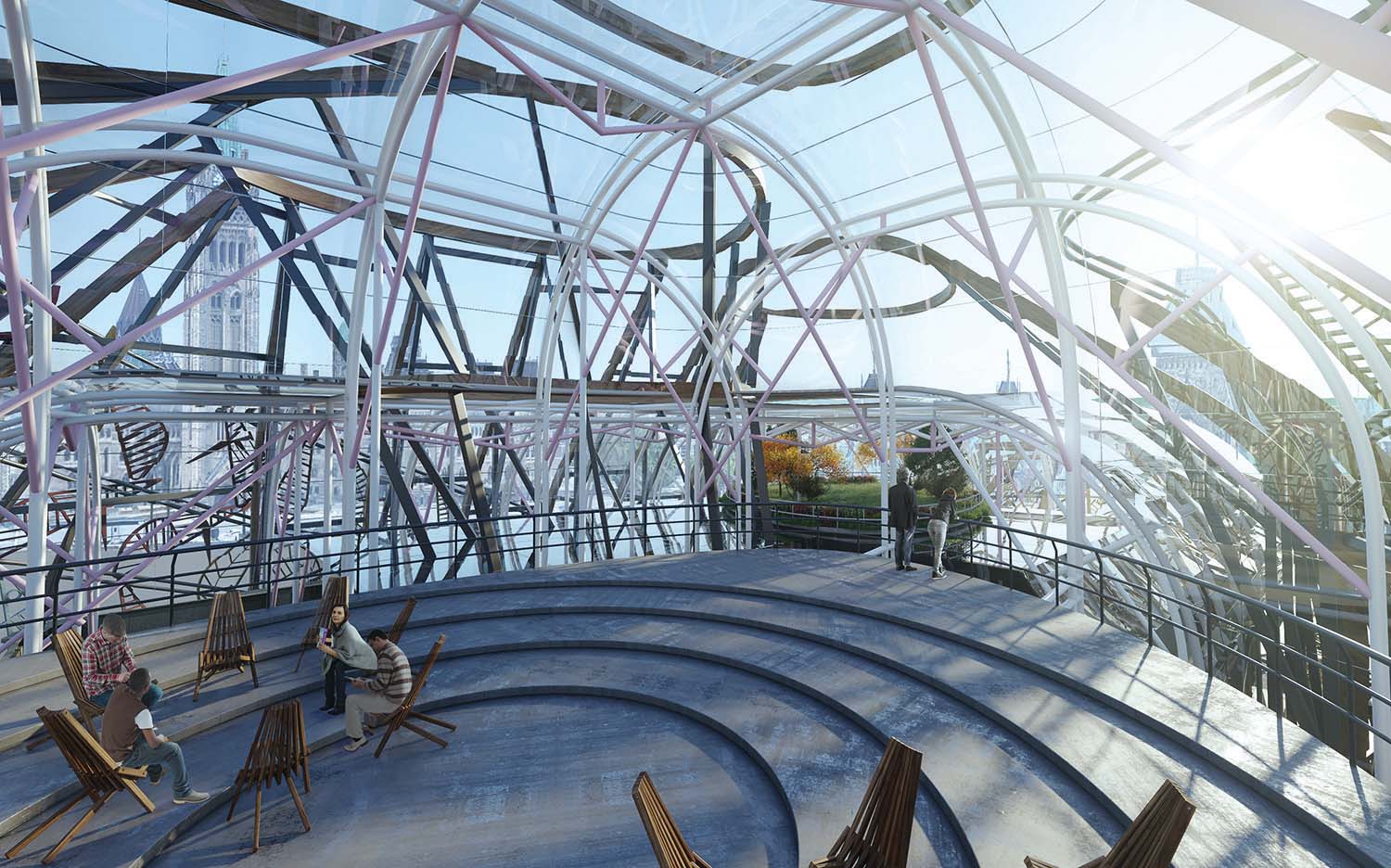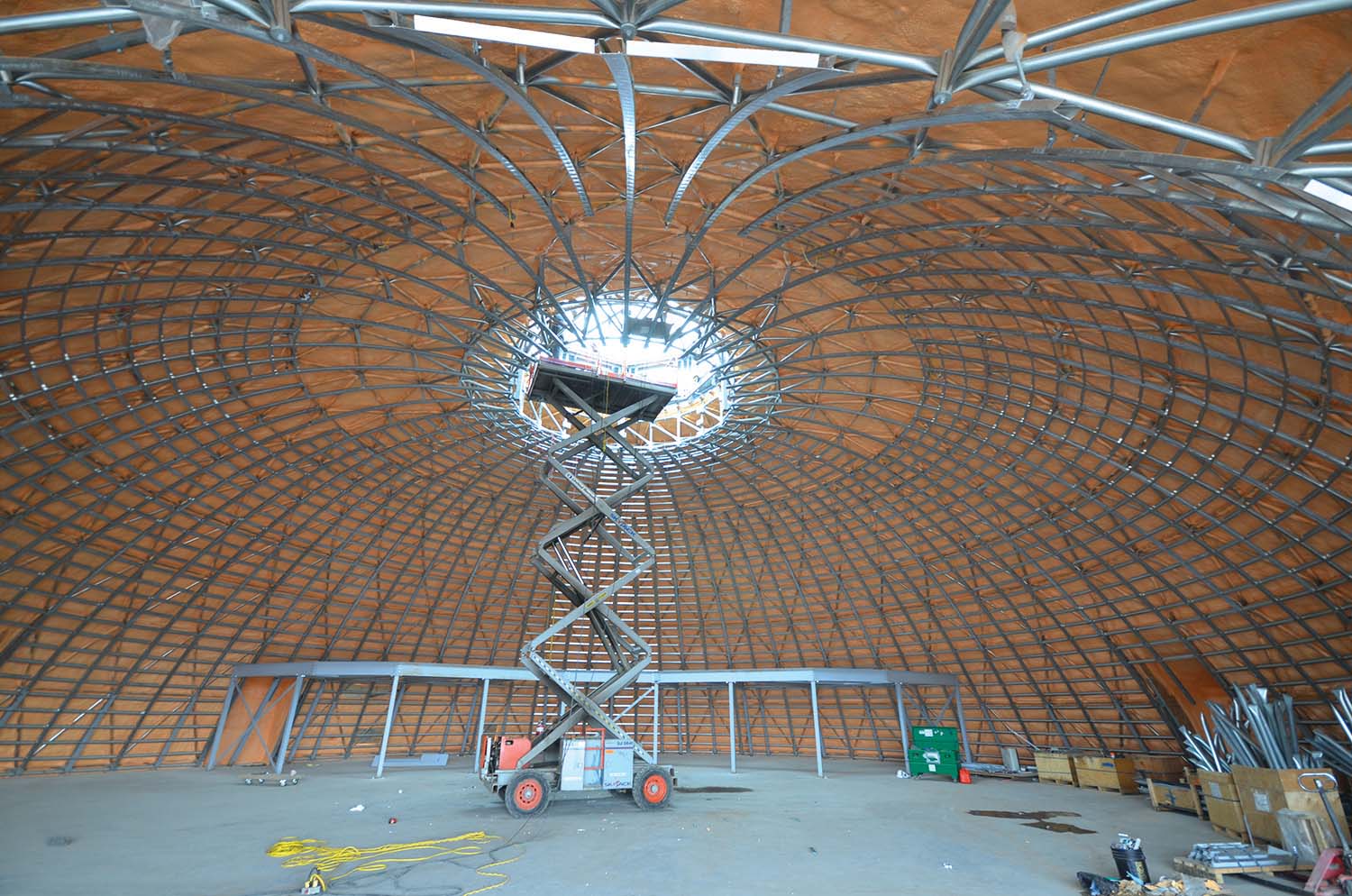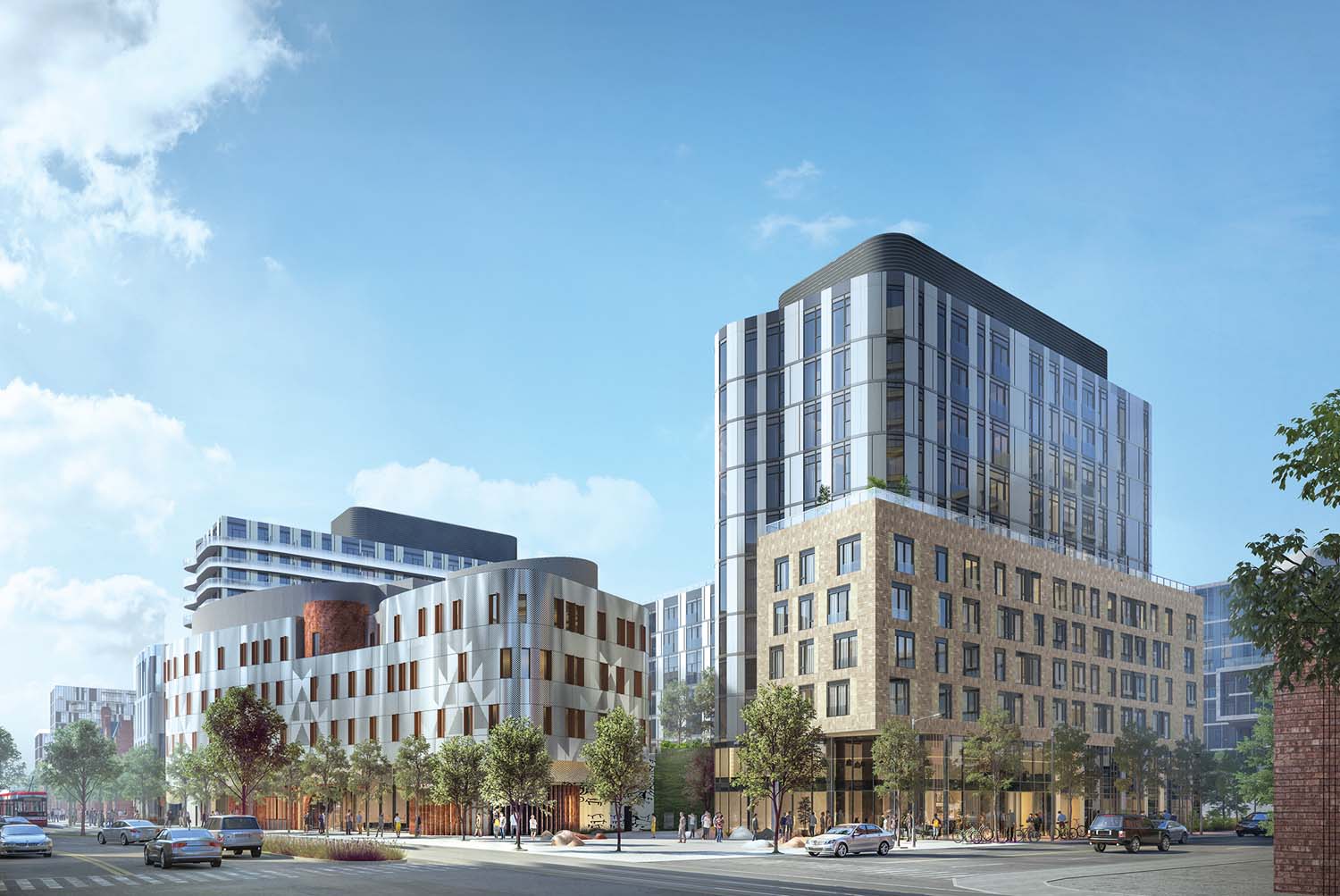Learning from Indigenous Consultants
What are the next steps for both Indigenous architects in Canada and their non-Indigenous allies?

The COVID-19 pandemic is an opportunity for architects to reassess their roles in creating safe spaces for cradling humanity. Indigenous design thinking, with its focus on kinship, community, well-being and nature, is a new-old way to reinvigorate the human-environment relationship.
What is Indigenous architecture? According to Maori architect Hirini Matunga, it means exhibiting some—if not all—of the following characteristics:
- a clarity about its genealogy or whakapapa [a Maori principle of identity]
- a link to an Indigenous archetype or archetypes
- an engaged response to a defined Indigenous need—past, present or future
- a structural articulation of the cultural and social values of the particular Indigenous community
- a design response to an Indigenous peoples’ specific place-based narrative
- a structural form—informed by Indigenous knowledge, world views and cosmology; and
- an inherent, culturally configured or ascribed Indigenous meaning1
Over the past few years, Indigenous architecture has been coming to greater prominence within Canada. Notable developments include the foundation of the Laurentian University School of Architecture, which includes Indigenous values and Elders as part of its teaching, and the creation of the RAIC’s Indigenous Task Force, which currently includes 17 Indigenous members. Indigenous architects have seen increasing demand for their participation on architectural teams, particularly in the government and institutional sectors.
What is the road that led to this point, and what are the next steps for both Indigenous architects in Canada and their non-Indigenous allies? Over the past months, I was privileged to conduct interviews with some of Canada’s talented Indigenous architects. These individuals revealed their collective histories, frustrations, and hope for the future of work with Indigenous Nations.

nehiyaw architect Wanda Dalla Costa (Redquill Architecture), on the status of Indigenous architecture in Canada
We are so constricted and strapped by colonial processes—whether it is in the budgets, hierarchies, methodologies, or lack of Indigenous concepts (ways of being, connecting, and doing). Indigenous ideas do not have a place in the current system, and that is holding architecture down.
Indigenous architects offer lived experience. If you have no idea what it is like to live on the Rez and what it is like to be an urban Indian, how can you design their spaces? It helps to have knowledge of beliefs and value systems to connect to the inner aspirations of people. All architects are influenced by sociocultural, environmental and systemic factors. In order to understand the complexities in our communities, you need to know what kind of questions not to ask, what kind of trauma a place has experienced, what are the aspirations. The best way to do that is to be from that place.
The values we imbue in architectural processes come from our traditional systems that are associated with our traditional architecture. Architecture is in the place, it is very specific to the place, we cannot know about that place and nor should we pretend to. When we are trying to reconstruct a future, we need to be really good listeners, and ‘imagineers.’ What we are doing is reimagining a future that is not the one we are living in. And I think humility is at the base of this.
Nisga’a architect Patrick Stewart (Patrick Stewart Architect), on the lack of Indigenous architects in Canada
As a student, I asked an Elder in my community, “Why are there not more people going into architecture?”
He said, “When the Indian Act was repealed in 1951, all of a sudden we could go to school, all of a sudden we could hire lawyers, we could fight the Indian Act. The only way [an Indian could go to University] was to be enfranchised. So they enfranchised him and sent him to school [and] he became a lawyer. In 1972, there was the Calder decision, where the Supreme Court of Canada reached a hung decision, in that there were three judges in support of the Nisga’a Nation and three against. The Nation took this as a victory, because never before had the Supreme Court supported anything from a First Nation.”
“The Nisga’a Nation has never stopped fighting: ever since surveyors came into our territory in 1881, we immediately went to Victoria, when we didn’t get any results, we went to Ottawa, of course there was no support there, and then we went to the Queen, we went to London. There has never been a time since settlers came into our territory that there hasn’t been resistance. Lawyers were the first thing we needed, and then when residential schools closed, we needed teachers. With residential schools closing, and with students coming back without parenting skills, we also needed social workers. Until 1972, we didn’t have a road into the valley, so we decided we needed nurses to work in the clinics.”
He said, “architecture will come”—it just wasn’t the first priority.


NunatuKavvut Métis architect Harriet Burdett-Moulton (Stantec), on the creation of the RAIC’s Indigenous Task Force
There was little to no engagement with acknowledged-Indigenous architects (beyond famed Blackfoot architect Douglas Cardinal) until 2017, when the RAIC’s Indigenous Task Force was created. This timeline also reflects the momentum generated by the Truth and Reconciliation Commission (TRC), which began its work in 2008 and published its damning final report in 2015.
The typical approach of window dressing—paint on the walls, or ornamentation—is a paltry nod to Indigenous cultures. These cultures represent a very rich resource that could be used in design to set Canadian buildings apart from other Western countries. There are 57 different languages or dialects across Canada. People on the East Coast are very different than people on the West Coast.
The TRC report includes Call to Action #92, the single action item that may be applied to the field of architecture. Titled Business and Reconciliation, it calls on the corporate sector to commit to meaningful consultation with Indigenous peoples before proceeding with economic development projects, to ensure that Indigenous peoples have equitable access to job opportunities, and to provide education for management and staff on the history of Indigenous peoples.
In concrete terms, an example of this in architecture could be working to increase the number of Indigenous architects and construction workers. Continuing education courses, as well as the core curriculum in architecture schools, could be ideal places to implement skills-based training in intercultural competency.
Considering the fundamental role of architecture in nation-building, it is unfortunate that architecture does not have its own Action, however, that should not detract from the impressive possibilities contained in this Call.

Oneida Nation architect Brian Porter (Two Row Architect), from the Oneida Nation, on the underwhelming and cyclical understanding Canadians have had of Indigenous issues
In the 1980s and 1990s, the topic was discussed often, but little action resulted. It has come a long way—it has and it hasn’t. In 1996, a procurement strategy for Aboriginal business was kicked off that empowered and encouraged all federal government divisions to direct their infrastructure needs towards Aboriginal businesses. Even back then, some took it on more seriously than others. I think it is safe to say that there wasn’t any division of the federal government that met that target.
I’ve felt a palpable change in the last two years or so. We are doing projects—it seems like the cities and municipalities are interested, they’re more concerned, they are more aware. We are working on teams with mainstream architects. It has changed—it feels more like family—my sense is that [clients and non-Indigenous architects] are starting to get it a little bit more. It feels different.
Denesuline First Nations architect Alfred Waugh (Formline Architecture) on the challenges of achieving architectural quality when building on reserves
There is a grey area operating on our reserves, because [the federal government] has wiped its hands clean of the fire safety input or review of documents. There is no municipal government, there is nobody ensuring that you do your due diligence as a professional. It is up to our own body to discuss this and make our client aware of what their rights are, and make them aware that they can contact our organizations.
Do you submit letters of assurance? Who do you submit letters of assurance to? When there is no municipal body, do we recommend clients hire a planner or a building inspector? These are all things we have to consider. A consultant will build a building, and then disappear. There is no recourse. And because there is no municipal infrastructure to develop building permits, the Nations are all left in the dark.
Waugh and Patrick Stewart are currently developing education tools to support architects and Indigenous communities facing these issues. They hope to mitigate many of the problems that Indigenous communities experience with their buildings—a list that includes receiving architecture that does little to reinforce Indigenous values and nation-building goals.
Métis architect and educator David Fortin (McEwen School of Architecture at Laurentian University) on the role of Indigeneity in architectural education
Recently, within the academic community, we are seeing broad interest in Indigenous causes and a critical questioning of what Indigenous Architecture is. This is still a relatively nascent conversation and a tricky one with so few Indigenous voices to lead it right now. It is clear that the most productive work occurs when universities focus on forging meaningful relationships with communities to produce ideas and work that genuinely support the community’s best interests and thereby avoids hasty tokenism to meet new university mandates. It is also exciting that students across the country are recognizing the importance of Indigenous-led design and development, learning about the impact of colonialism on the built environment, and questioning their responsibility within this discourse. We are seeing a growing—and truly inspiring—new generation of Indigenous interns and students already rising to the challenge, who are very soon going to be providing strong leadership in our profession.
A spectrum of perspectives
The spectrum of perspectives within Canada’s small Indigenous architecture community ranges from fatigue and disappointment, to commitment to change. The architects I spoke with see a huge potential within Canadian Indigenous architecture. Indigenous involvement, direction, and consultation on architecture requires additional effort in engagement. The Indigenous consultants I spoke with felt that Indigenous peoples, with their experiences, internal value systems, and humility—whether leading projects or being engaged in authentically respectful relationships and dialogue—can add immensely to projects in a way that is transformative and reflects what Indigenous architecture should be.
1 Harini Matunga, “A Discourse on the Nature of Indigenous Architecture,” from The Handbook of Contemporary Indigenous Architecture (edited by E. Grant, K. Greenop, A.L. Refiti, AL & D.J. Glenn, DJ. Spinger, Singapore, 2008).
Omeasoo Wahpasiw is an assistant professor in the Faculty of Arts and Faculty of Education at the University of Prince Edward Island.
